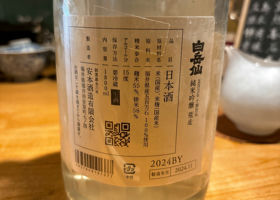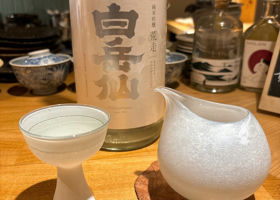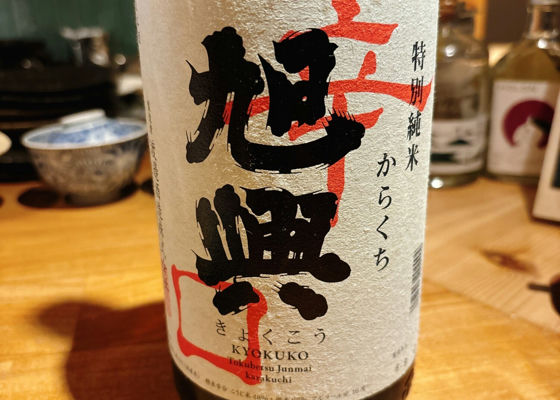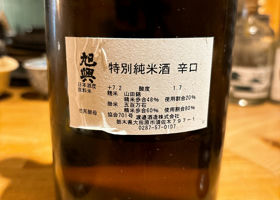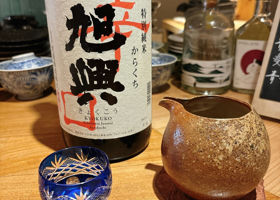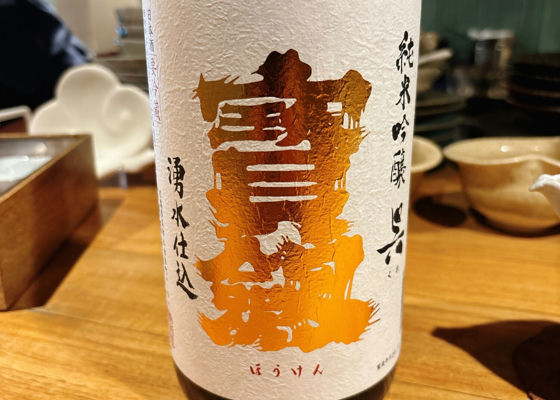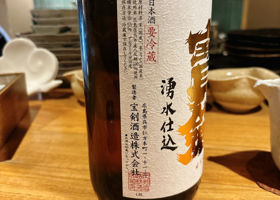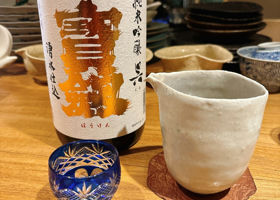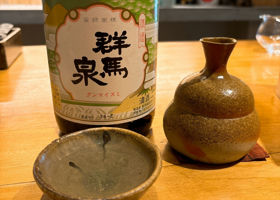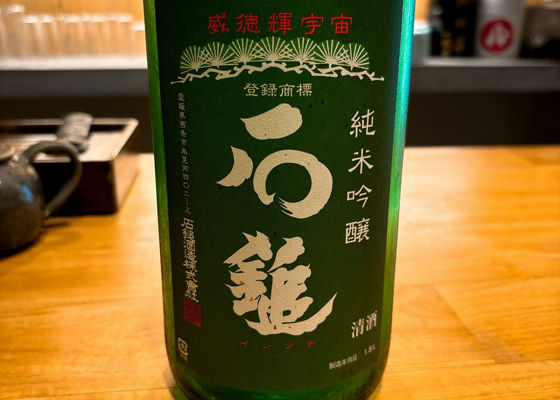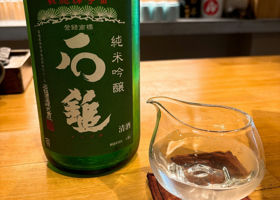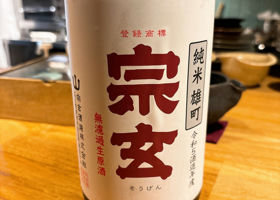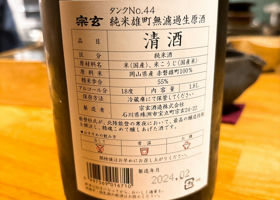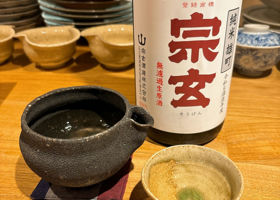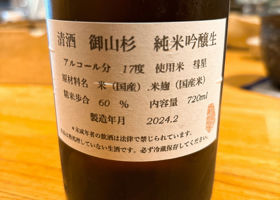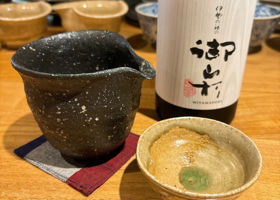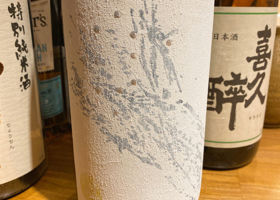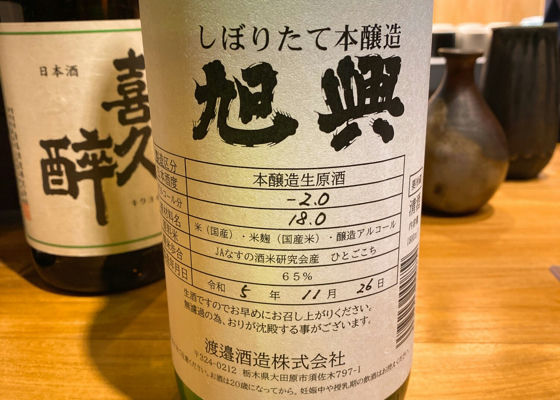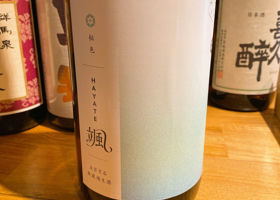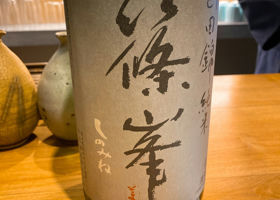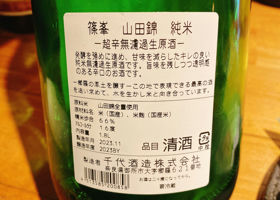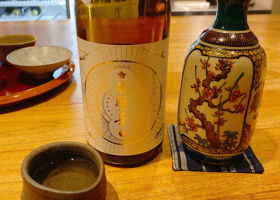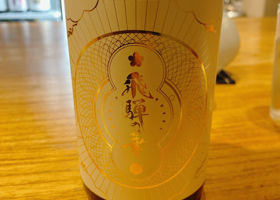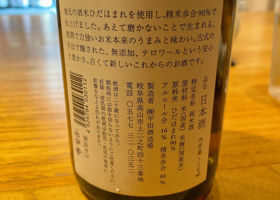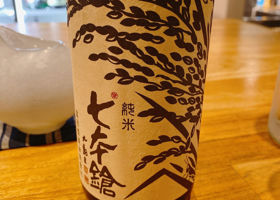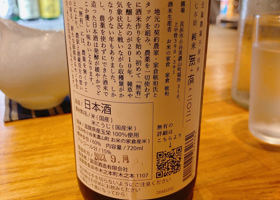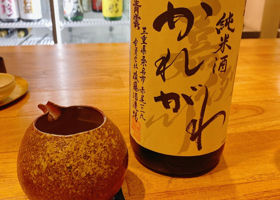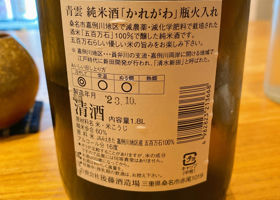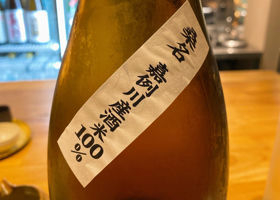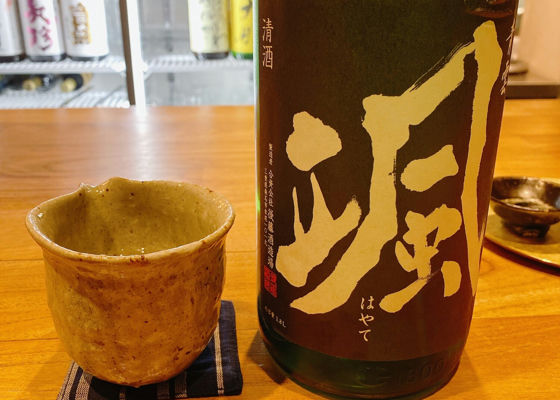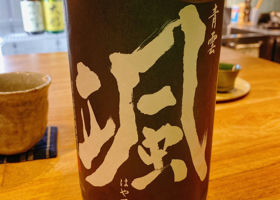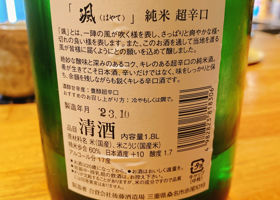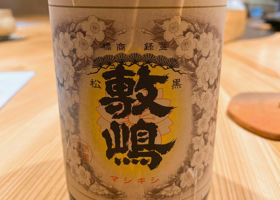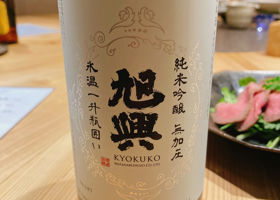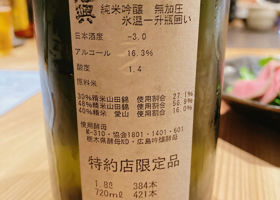Timeline
やす☆It has a light, refreshing, and crisp summery taste, but the umami flavor that spreads softly in the mouth afterward is typical of Tensho. やす☆It has a slightly thickened texture with a mildly sweet and umami taste, which is tightened by citrus acidity. やす☆It has a freshness typical of new sake and a crisp, sharp sharpness typical of Gohyakumangoku. やす☆Clear, crisp, and sharp. As the name suggests, it is very sharp and dry. やす☆It has a clear and refreshing taste with a good sharpness. The taste is crisp and dry, just like the image of Houken. やす☆Warmed. The rich umami of the warmed sake expands, but it also finishes crisp and clean, as is typical of Aruzoe. Well balanced. やす☆It has a clear, jungin-like flavor with a good core of umami and good sharpness. やす☆A small support for the disaster-stricken areas.
It has a melon-like, mildly sweet flavor typical of Omachi. It has a hint of a raw sake feel, but it is not too heavy and easy to drink due to the beauty of the 55% polished finish. やす☆The first Miyamasugi.
It has a slightly heavy, umami taste on the palate. Although the alcohol content is high, the 60% polished finish is clean, and the heaviness and the aftertaste of the sake are well balanced. やす☆As the name suggests, it is light and dry, with no sweetness. It is refreshingly light and crisp, with a crisp finish. Although it is alky, there is no sense of alcohol. When the temperature rises, it becomes a little softer. やす☆Warmed.
It has a mellow flavor that is typical of heated sake, but it also has a sharpness with the acidity of a sake made from the traditional sake brewing method. やす☆The refreshing taste of Aruzoe coexists with the soft and gentle sweetness and flavor typical of Asahi Kohshin. やす☆Tasted again on 7/28. It has an unexpectedly heavy attack with a strong alcohol taste. It has a mild, thick rice sweetness and umami flavor. やす☆It has a clear, fresh acidity and a clear, soft flavor. やす☆As the name "super-hot" implies, the wine is crisp and refreshing with a refreshing acidity. The freshness of the wine is modest, perhaps due to the fact that it has been open for some time. やす☆The first Hida-no-Hana was served warm.
It has a mild, gentle, and beautiful flavor that you would not expect from a 90% polished sake, and it has a nice sharpness. It is an interesting sake that is surprisingly good lukewarm (less than 50℃). やす☆It has a clear, mellow flavor with good sharpness. A stable Seven Spears. やす☆This is the first Karegawa.
It has more umami than Sashi from the same brewery, but it also has a light and refreshing taste, which is typical of Gohyakumangoku. This is also an easy-drinking mid-meal sake. やす☆First time dashing.
It has a subtle umami flavor and is crisp and clean. It is not too sharp and easy to drink, even though it is called super-harsh with a sake meter of +10. やす☆Aichi limited version with old label.
It has a refreshing mouthfeel. It has a good umami flavor and is crisp with acidity. The taste is typical of Shikishima, but the 16% alcohol content gives the impression of being light for Shikishima. やす☆Although it is jungin, the rice polishing ratio is 30-40%. The elegant and silky peachy sweetness and flavor that is typical of highly polished rice is impressive. やす☆Tasted again on 2/12 at Brahma. The impression was basically the same, but I felt pear. RecommendedContentsSectionView.title







